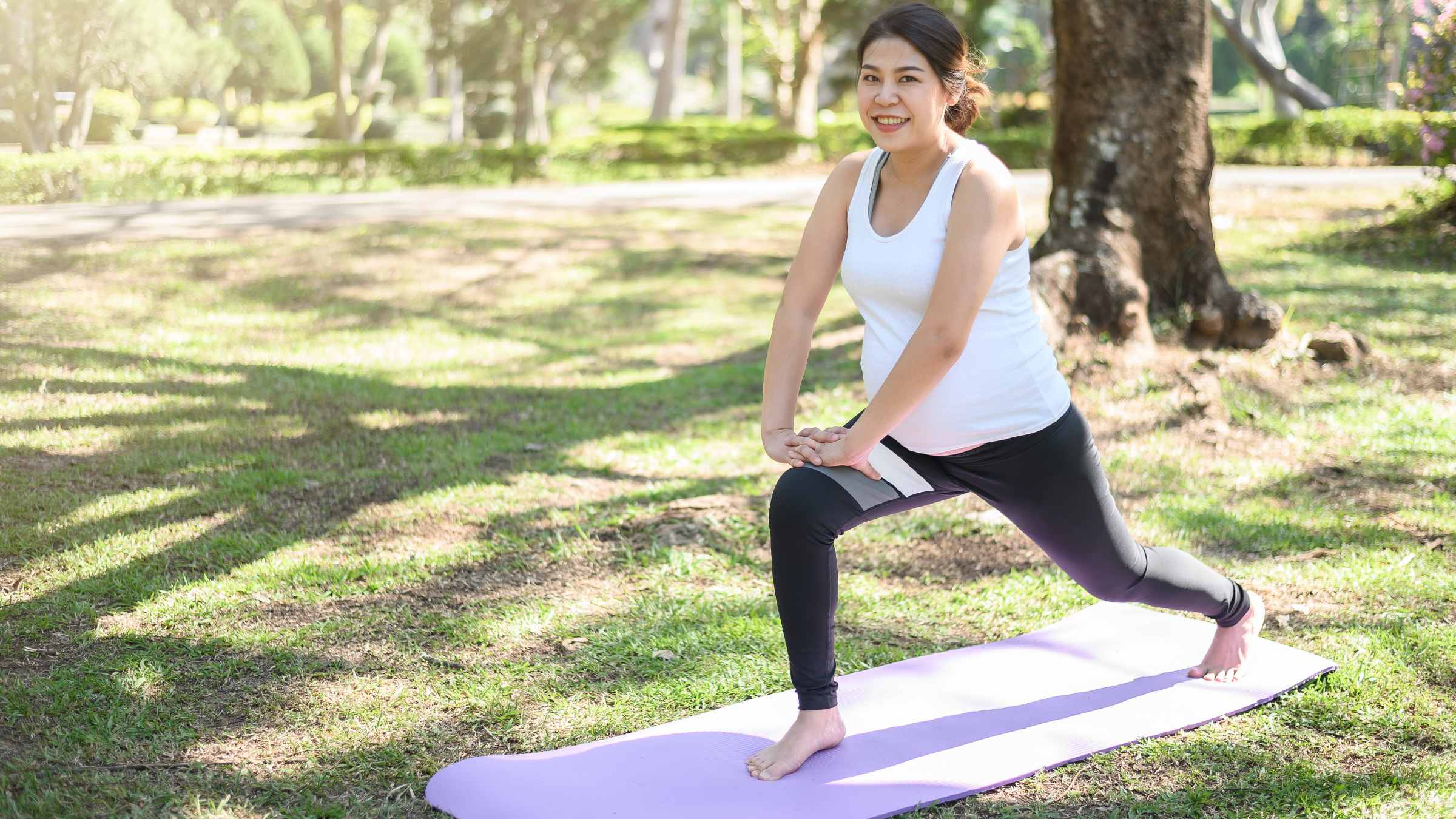
With all the excitement of being pregnant can come a bit of concern: I’m going to gain weight. Possibly a lot of weight.
And how can I get in shape or stay in shape while my body changes so much?
Try not to focus on how much weight you might gain and talk to your health care provider about your weight goals. Aim to gain a healthy amount of weight — 25 to 35 pounds — to reduce your risk of gestational diabetes, assist with maintaining function and reduce the intensity of common aches and pains associated with pregnancy.
When you’re pregnant, it’s not a good idea to focus on dieting. Instead, try to focus on eating well, including healthy grains and proteins and fitting in two to three servings of fruits and vegetables a day.
And it’s important to exercise. If you were active before pregnancy, you can maintain that level of exercise. If you weren’t, gradually increase your activity level. You could start with walking, which is very safe and effective.
But how do you know you’re exercising correctly and at the right intensity level? One way to tell is the “talk test.” If you can talk to someone while you exercise, even if you’re a little winded, that’s an appropriate level. As you get closer to your due date, you’ll be winded sooner, so be sure to give yourself breaks when you need them. The talk test can be applied to cardio exercises, exercise classes, yoga and even strength training.
It is safe to start exercising during any month of your pregnancy?
Yes — the sooner, the better, to give you time to get the benefit of your exercises. Being as fit as you can during your pregnancy can also help you recover after you give birth and will ease some of the aches and pains of your constantly changing body. You may have to adjust your exercise.
You can modify your exercise with:
- Wider stances when you squat
- Smaller stances when you lunge or changing to single-leg squats
- Avoid lying on your belly after 12 weeks of pregnancy without supports to reduce abdominal pain.
Be sure to avoid lying flat on your back sometime starting in the second trimester, but definitely between 24 to 28 weeks. This can increase your risk for orthostatic hypotension, which is a form of low blood pressure that can lead to dizziness, lightheaded sensations and shortness of breath. The reason you need to avoid lying flat for long periods is because that’s when a baby can put too much pressure on your vena cava, a large vein in our abdomen, which can decrease blood flow to the baby.
Avoid sit-ups and crunches. They can cause unnecessary stress on the pair of muscles that run vertically up the front of your abdomen. However, there are many core strengthening alternatives that can be completed. I highly recommended seeing a physical therapist who specializes in how the body changes during and after pregnancy.
You may have to avoid or change your exercise if you have:
- Shortness of breath
- Abdominal cramping
- Swelling in extremities
- Nausea
What are some core exercises you can do throughout pregnancy?
Pelvic rock — While on your hands and knees, exhale and pull your belly in towards your spine (give baby a hug with your muscles) and hold and gently shift your weight over your hands.
Bird dog — While on your hands and knees, exhale and pull your belly in towards your spine, hold and lift your opposite arm and leg up. Don’t arch your back.
Squats — Inhale as you bend down, exhale and pull your belly in towards your spine as you straighten your legs.
Regardless of the exercise you chose, drink plenty of water before and after you exercise. Staying hydrated is very important during pregnancy.
Stop exercising if you experience:
- Abdominal pain or cramping
- Abdominal doming, in which you see a bulge or dome pop out down the middle of your stomach
- Contractions during or after exercise
- Unstable blood pressure
Avoid exercising while pregnant if you have:
- An incompetent cervix
- Unstable blood pressure
- Placenta previa
- History of ruptured membranes
- Evidence of intrauterine growth restriction
After you have your baby, it could take up to a year to lose the additional pounds
It takes nine months to grow a baby. It can take nine months to one year to lose the weight after pregnancy. Our bellies don’t necessarily have additional fat after pregnancy, but they can appear as if they do because the muscles in our middle are stretched out. It takes about three months postpartum for our hormones to return to pre-pregnancy levels, and once they do, that can help with weight loss.
If you’re breastfeeding, losing weight might take longer. Having enough essential fat is necessary for producing a regular supply of milk for the baby.
If you’re concerned that your belly’s sag doesn’t go away, try these exercises:
Breath is key with your recovering after giving birth. The pelvic floor muscles are in the floor of your abdominal cavity, which is literally the floor of your pelvis. The diaphragm is the ceiling, so diaphragmatic breathing, or belly breath, is the foundation for recovery.
If you’re trying to strengthen your core muscles, you can try:
Belly breath:
Take a deep breath in, let your belly expand, and think about breathing into your lower ribs. As you exhale, let your belly relax and come down. Try this for a few minutes to get into the rhythm.
Transverse abdominis activation:
Use the same few steps as belly breath, but as you exhale, use your belly muscles to pull your belly button to your spine. Relax on your inhale. Try 10 times, one to two sets.
Kegel exercises:
Take a deep breath in and expand your belly. When you exhale, think about picking up a blueberry with your vagina muscles, or stopping the flow of urine. This is a Kegel exercise. Try that five to 10 times. You should be able to tell that you’re contracting. If you’re not sure, you may be weak, or even tight. (Yes, pelvic floor muscles can be tight.)
You can seek the help of a pelvic floor physical therapist, a therapist specializing in helping people strengthen muscles that support the bladder, urethra and other pelvic organs. Such a therapist can determine if you have diastasis rectus abdominis, a condition that can happen when a growing uterus causes the stomach muscles to separate. A pelvic floor therapist can also work with you to restore strength in your core.

Join the family of Buckeye Babies
Learn about obstetrics and gynecology services from central Ohio's most experienced team.
Get started







